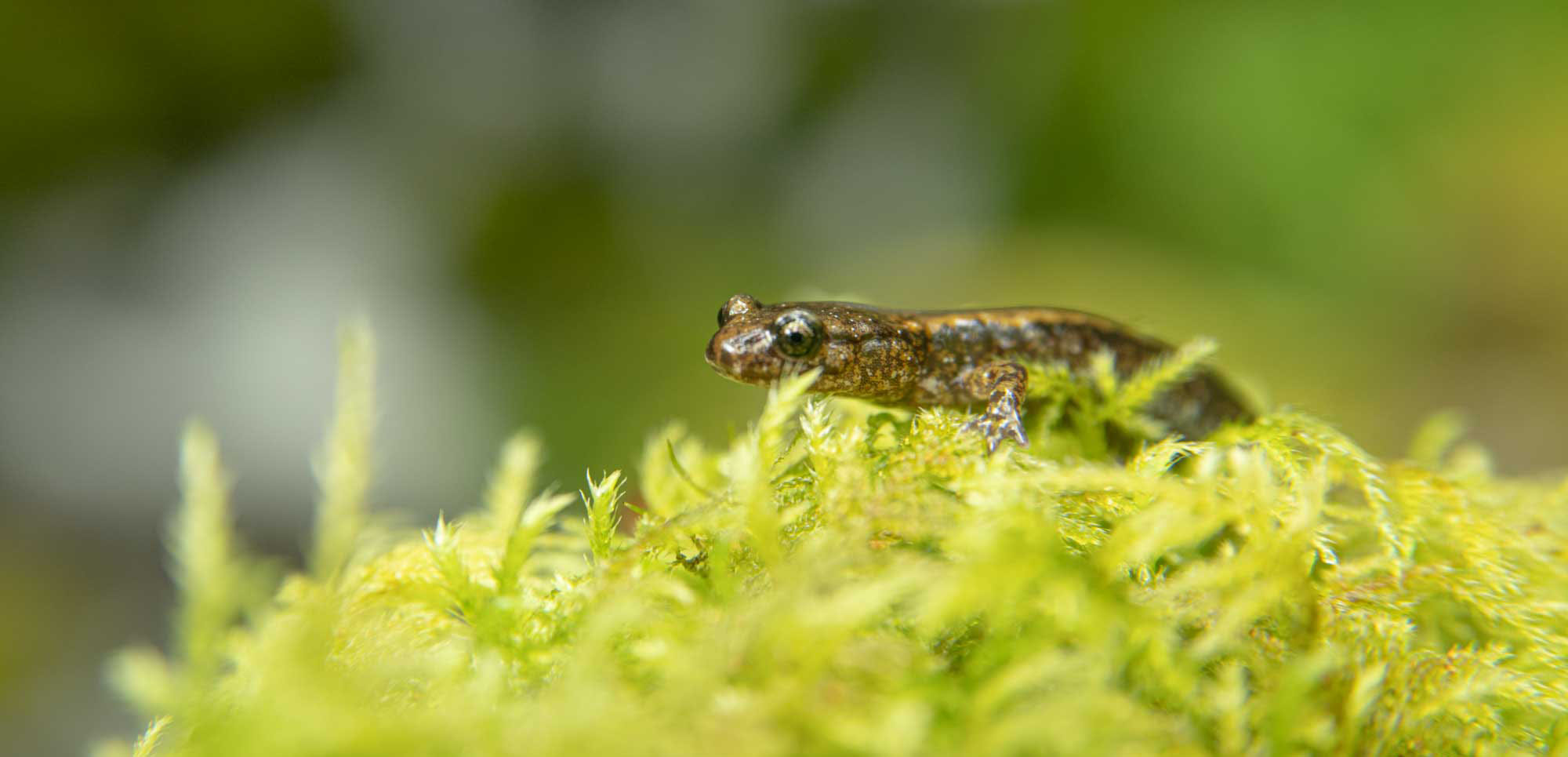In addition to managing wildlife habitat on your forestland generally, you can also research wildlife specifically and make choices that are known to benefit a single species or a group of species. The resources in this section are geared toward ways to manage your forest for specific species.
Pollinator habitat
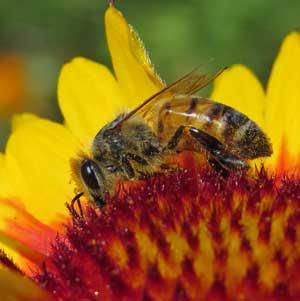
Supporting pollinators like bees and butterflies boosts biodiversity and ecosystem health. Forest landowners can plant native flowers, maintain open spaces and protect riparian areas to create thriving pollinator habitats. Learn more from the following publications and resources:
Wildlife in Managed Forests: Native Bees
This 24-page booklet offers forest landowners and managers an introduction to the vast variety of native bees that are found in Oregon’s forests. This booklet provides a background and context for better understanding the role managed forests play in providing habitat for native bees. The reader will learn about the threats to native bees, current research and techniques to provide habitat for native bees.
Bees in the Woods
A new video series by Oregon State University Extension explores ways forest landowners and managers can recognize, protect and improve bee habitats through active and passive management across diverse forest ecosystems.
Native Bee Webinar
This webinar features experts from the National Council for Air and Stream Improvement, the University of Oregon and the Oregon Department of Forestry discussing the latest research related to native bees in Oregon’s forests and forest management practices that benefit bees.
Wildlife in Managed Forests: Pollinators and Forestry
This two-page fact sheet explains the importance of pollinators, which include bees, beetles, butterflies, moths, hummingbirds, wasps and flies, and offers tips for what forest landowners and managers can do to help them.
Forest Bee Pollinators
Our first thought of pollinators usually takes us to the honeybees that are important to agriculture. Honeybees play such a large role in agriculture that sometimes the many wild bees that occur in other habitats such as forests are overlooked. There are over 4,000 known species of wild bees in North America , many of which are forest bee pollinators living in temperate forest ecosystems.
See the Forest for the Bees
Oregon is home to over 500 species of bees, which are responsible for pollinating many of our staple crops and plants. Bees also live in Oregon's forests. Who and where are they? What can we do to protect them?
Seed Mixes for Wildlife
Part of the Oregon Forest Resources Institute’s Wildlife in Managed Forests reference series, this fact sheet offers tips for forest landowners and managers on when and where to plant a wildlife-friendly seed mix that will benefit pollinators, as well as where to purchase locally sourced seed mixes.
Bird habitat
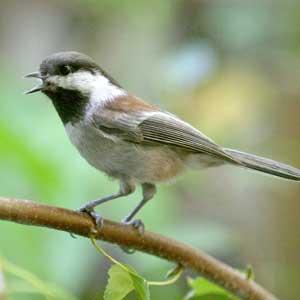
Enhancing bird habitats supports forest health and biodiversity. Forest landowners can provide nesting sites, preserve diverse tree species, and maintain riparian zones to attract and sustain bird populations. Learn more below:
Wildlife in Managed Forests: Forest Practices Act Reference Series
This publication will help forest managers plan management activities that have the potential to impact forest-dwelling birds such as the bald eagle, marbled murrelet or osprey. It specifically outlines the nesting seasons of all the birds, plus a few more species that are protected by the Oregon Forest Practices Act.
Managing Small Woodlands for Raptors
This publication provides information on the range, habitat, status and life cycle of forest-dwelling raptors in Oregon and Washington. Additionally, it briefly discusses pertinent regulations for these raptors.
Cavity-nesting Birds and Small Woodlands
Many birds utilize cavities for roosting, resting, cover or other purposes during some time of the year to ensure their survival in forested areas in Oregon and Washington. These colorful, active and interesting bird species have important ecological roles that enhance the beauty and ecological health of woodlands. This publication discusses different cavity-nesting bird species, their habitats and management techniques for small woodlands.
Hawk, Eagle and Osprey Management on Small Woodlands
Raptors, or birds of prey, include hawks, eagles and osprey. Raptors benefit from small woodlots because most of their food is small mammals, along with some birds and reptiles. This publication discusses raptors, their habitat and management techniques for small woodlands.
Managing Forest Habitats for Migrant Songbirds
This publication discusses migrant songbirds that migrate to the Pacific Northwest in the spring. Warblers, flycatchers, hummingbirds, thrushes, swallows and vireos are common examples.
Managing Pacific Northwest Forests for Band-tailed Pigeons
The welfare of the Pacific Coast population of the band-tailed pigeon is directly related to forestland management in Oregon and Washington, and is therefore of interest to small forest landowners. This publication discusses the species’ history, population status and management.
Managing Small Woodlands for Grouse
The Northwest is home to six of the 10 species of North American grouse. Three of the species are found in forested areas and may be impacted by operations on small woodlands. This publication discusses grouse, their habitat and management techniques for small woodlands.
Quail on Small Woodlands
This publication discusses the different species of quail that are found in the Pacific Northwest, plus their habitat and management techniques.
Wood Ducks on Small Woodlands
This publication discusses wood ducks, including the species history, population status and management.
Habitat Management for Turkeys on Small Woodlands
This publication discusses wild turkeys, including the species history, population status and management.
Wildlife in Managed Forests: Early Seral-associated Songbirds
This booklet offers forest landowners and managers scientific background and solutions for managing young forests to promote songbird habitat. It’s part of a series of publications produced by the Oregon Forest Resources Institute that address the habitat requirements and ecological roles of various wildlife species in the Pacific Northwest.
The Secret Life of Birds
Discover the fascinating world of birds, including how they fly, migrate, build nests and communicate, while learning to interpret their behaviors and uncover the secrets they share.
Support Your Local Raptors
Understand raptors as your never have before in this recorded webinar.
Mammal habitat
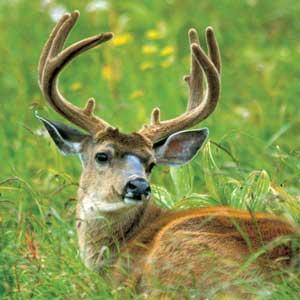
Creating diverse habitats helps support a variety of mammals. Forest landowners can maintain wildlife corridors, protect underbrush, and ensure access to food and water sources to promote healthy mammal populations. Learn more below:
Beaver, Muskrat and Nutria on Small Woodlands
This publication discusses the three semi-aquatic rodents distributed throughout the Pacific Northwest: the beaver, muskrat and nutria .
Managing for Deer and Elk on Small Woodlands
Both deer and elk play important roles in the ecology and culture of the Pacific Northwest. These iconic animals can provide substantial benefits to woodland owners through viewing and hunting but can also be considered pests due to the damage they’re known to cause. There are many pressures on habitat for these species. The most important thing small woodland owners can do to maintain habitat for deer and elk is to keep their land in forest use.
Wildlife in Managed Forests: Deer and Elk
This publication is one of a series of publications from the Oregon Forest Resources Institute for forest landowners and managers that cover what is known about the habitat requirements and ecological roles of various wildlife species in Oregon and the Pacific Northwest. This one address deer and elk population dynamics, herd productivity, nutritional needs and response to human disturbance.
Wildlife in Managed Forests: The North American Beaver
Also part of the Oregon Forest Resources Institute’s Wildlife in Managed Forests series, this publication synthesizes current research findings related to conserving habitat for the North American beaver.
Habitat Management for Bats on Small Woodlands
This publication discusses common bat species of the Pacific Northwest and their associated habitats, history and management techniques for small woodlands.
Red Tree Voles and Forestry
This fact sheet on red tree voles is part of the Wildlife in Managed Forests reference series.
Sierra Nevada Red Fox and Forestry
This is fact sheet on the Sierra Nevada Red Fox is part of the Wildlife in Managed Forests reference series.
Wolves and Forestry
This is fact sheet on wolves is part of the Wildlife in Managed Forests reference series.
Coyotes: Wild and Free
Coyotes have continued to expand their range in Oregon and thus human and coyote issues have been multiplying. Understanding the coyote's ecology is critical to learning how to manage both the animal and us to minimize conflicts.
Fish habitat
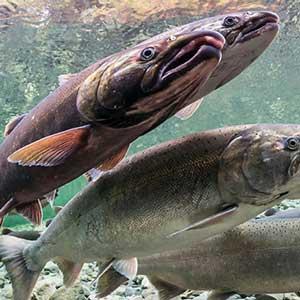
Healthy fish populations rely on clean, cool water and well-shaded streams. Forestland owners can protect riparian areas, minimize erosion, and maintain streamside vegetation to enhance fish habitats and support aquatic ecosystems. Learn more below:
Wildlife in Managed Forests: Fish Habitat and Passage
This publication describes the habitat needs of various fish species, and how forest landowners and managers can create quality habitat. It offers case studies and clear explanations of complicated fish passage rules. It’s part of the Oregon Forest Resources Institute’s Wildlife in Managed Forests series of publications addressing the habitat requirements and ecological roles of various wildlife species in the Pacific Northwest.
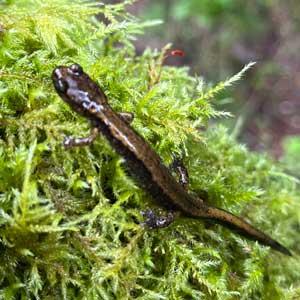
Amphibian and reptile habitat
Amphibians and reptiles thrive in habitats with different moisture levels, cover and undisturbed areas. Forest landowners can protect wetlands, preserve downed logs and maintain leaf litter to create suitable environments for these species. Learn more below:
Amphibians in Managed Woodlands
This publication describes amphibian habitats and which amphibian species are found in Oregon and Washington, plus common threats and recommended habitat enhancement techniques.
Wildlife in Managed Forests: Forest Amphibians
This publication introduces readers to the common species of amphibians found in Oregon’s forests, and explores the relationship between forest management and amphibian health. Part of the Oregon Forest Resources Institute’s Wildlife in Managed Forests series of publications.
Western Pond Turtles and Forestry
This fact sheet describes the habitat and seasonal activities of the western pond turtle and explores how forest management can improve their habitat.
Getting to Know Forest Amphibians of Oregon
Oregon's forests host a diverse array of amphibian species that require careful management to ensure their habitats remain protected and resilient.

